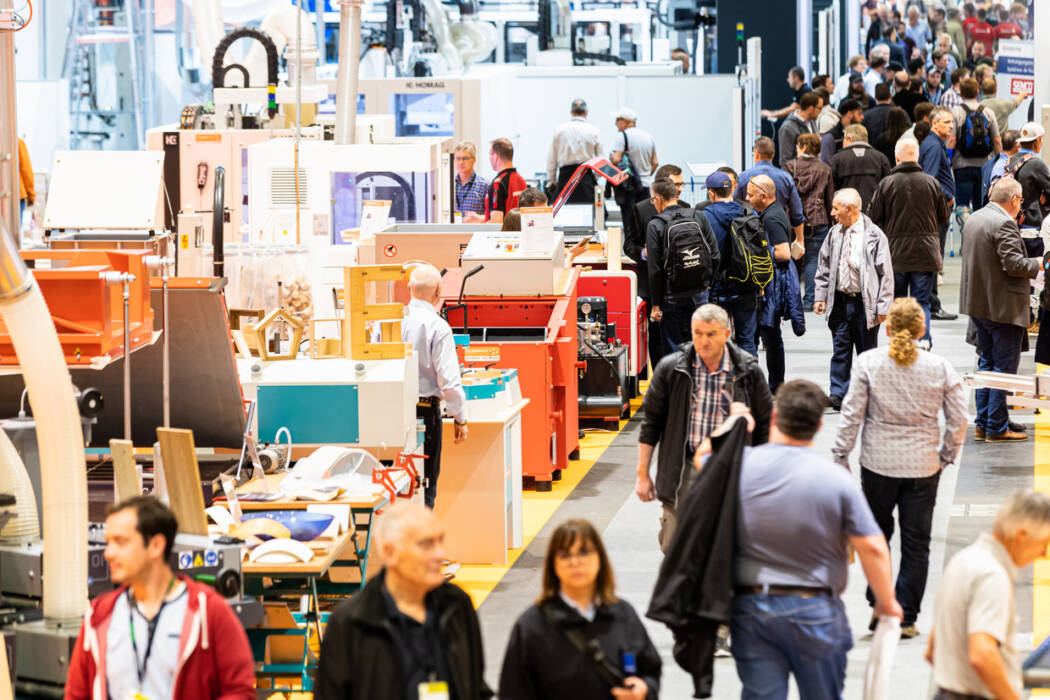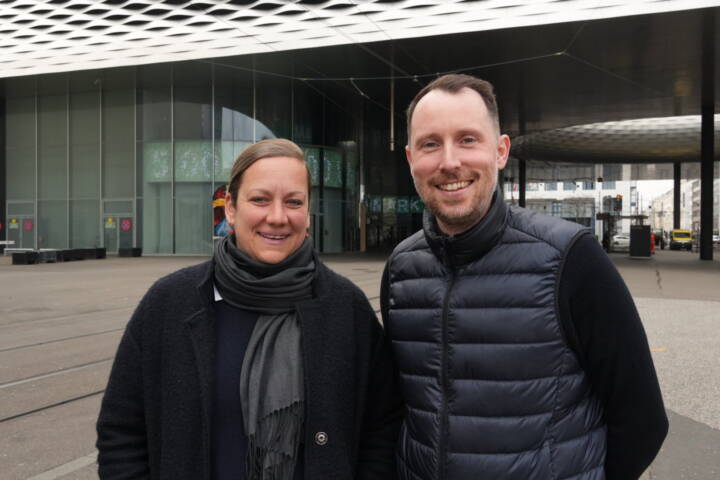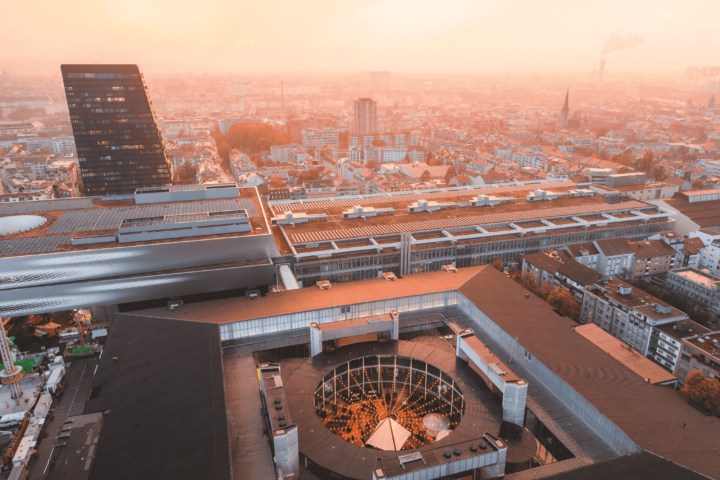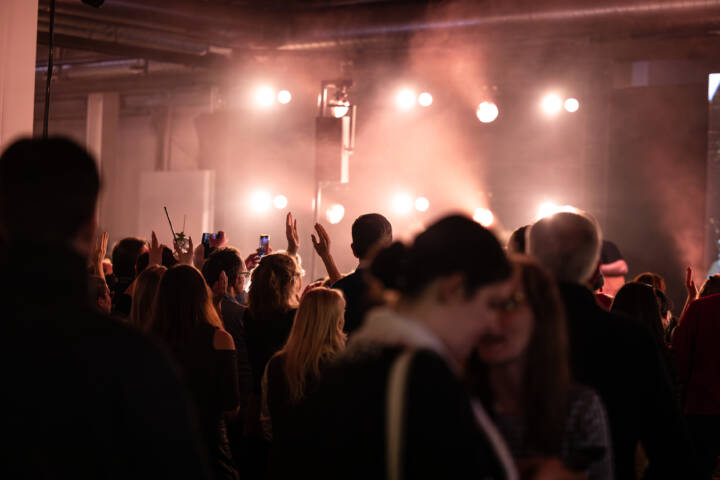
If we take a look at the Messe Basel event portfolio, it becomes clear that the building industry is over-represented in terms of the number of fairs. Whether this is set to remain so, despite the latest developments, is what we asked Theresia Saner, Head of the Construction Segment. Together with her team, she is responsible for Swissbau, Holz, Powertage and Smart Suisse. We also asked Peter Niederer, managing director of HOMAG AG and one of the biggest exhibitors at Holz, how he assesses the situation from the customer’s point of view.
What are the most important events in your industry?
Peter Niederer: For machine suppliers like us, it’s the big trade fairs like Swissbau and Holz, but also our own in-house fairs. The demonstration effect is essential for presenting our product range in the optimum manner. While the lack of these opportunities is bad for us as an eminent company, it is devastating for smaller companies or those that are still in the process of being built up.
When the pandemic situation returns to normal, will trade fairs still be required or will all sales activities have been switched to the World Wide Web?
Theresia Saner: Even before corona, we were already working with the individual industry representatives on further converting classical trade fair formats into multidimensional and hybrid platforms. The pandemic and the restrictions it has entailed have simply sped up this process, and this is opening up major opportunities. It’s also important to remember that visitors go to a trade fair today to be inspired, to talk with like-minded people and to maintain their networks. I don’t think that we’ll be doing without all of this in future. On the contrary – the discussions I’ve had with my customers have shown that there will be a huge backlog to catch up on once the situation returns to normal. People are missing their direct discussions with others, and there is nothing that can rival an in-person meeting.
Mr. Niederer, your company organises a number of events itself, even including an in-house fair. Will you still be holding this in future, or will you be adapting your marketing mix?
Peter Niederer: We’ve already begun adapting our events to the current circumstances this year. We’ve launched a permanent in-house exhibition and created our “VIP Days” format. Instead of organising large events, we’re now only inviting our customers individually. The exclusivity that this generates is greatly appreciated and we’re planning to continue with this in 2021. We’re also looking into offering workshops on specialist topics. Once the situation has returned to normal, however, we’ll doubtless be staging our in-house fairs again. And, in 2022, we’re naturally planning to participate in Holz.
Will digital be part of your day-to-day work in future too? Or will it become less important as soon as people can safely meet up again?
Theresia Saner: I don’t think that we will be returning to the status quo to date. During the lockdown and in the time afterwards, we saw that a great many things work well with the discussion options available to us when working from home. I’ve noticed that we have become more efficient by concentrating on the essentials. We’ve also been able to maintain our customer relationships very well via the electronic channels but are looking forward to meeting up with people in person again as soon as this becomes possible. This also marks an opportunity for live events: the multi-sensorial experience and the spontaneous fostering of networks with like-minded people have both an emotional and a lasting impact. And the dynamics of strategic or creative meetings can’t develop to the same extent in virtual space. That’s why I think a combination of both forms will prevail, both in my day-to-day work and in the trade fair business as a whole.
How do you think that people in your industry will communicate and interact in future?
Theresia Saner: We at MCH Group have long considered trade fairs to be industry platforms and regarded their visitors as communities. We maintain an active discourse with the most important industry representatives and are continuously developing our platforms further in co-creation with our customers. We want to offer our different stakeholder groups added value before and after the actual event too, by providing additional information or assistance with networking, for example. Corona has meant that all the partners involved are now faced with the same challenge, and future-oriented digital ideas can be openly discussed. I’m therefore assuming that trade fairs will continue to enjoy a high priority as part of our industry platforms, but will be accompanied by more additional activities. Peter Niederer: At the moment, it’s clear that all those involved are engaged in a readjustment process. I think that trade fairs will still remain the number one platform for our industry but that products will also be exhibited virtually to some extent at least in future. This will enable us to present a greater variety of products. We shouldn’t, however, give up the exhibition space saved in this way. My experience has shown that it is an enormous advantage to be able to welcome customers in a more spacious setting than previously.
Are trade fairs still particularly important for young people, or do you think that their interest is waning?
Peter Niederer: I think we’re all called upon to offer genuine added value to young people at trade fairs. Apart from the achievements of digitalisation, one aspect could be to highlight the career prospects that exist for them. This also means that we need to present the vocational profiles in a different way. Take the example of a carpenter who’s not only an expert in wood processing but also a designer, a planner, a CNC specialist, plus a great deal more. It’s a matter of changing people’s perception so as to remain attractive for the upcoming generation.
How can participation in a trade fair be translated into success?
Theresia Saner: We organisers see ourselves as market partners who work together with key industry representatives to offer relevant content for the corresponding communities and generate lasting experiences. In our talks with exhibitors, we define how they can best exploit this broad range of analogue and digital presentation options and achieve their goals in a profitable manner. Nowhere else do so many industry partners and communities meet up in such a short time as at a trade fair. We assist our various stakeholders in deriving as much benefit as possible from this.



